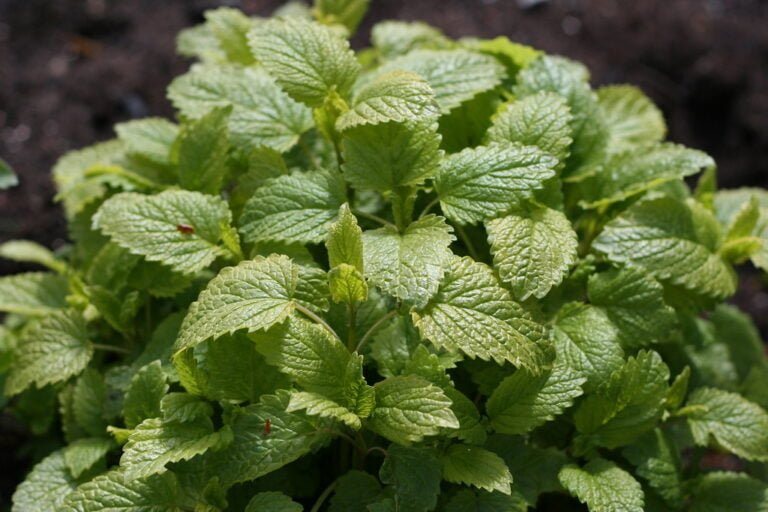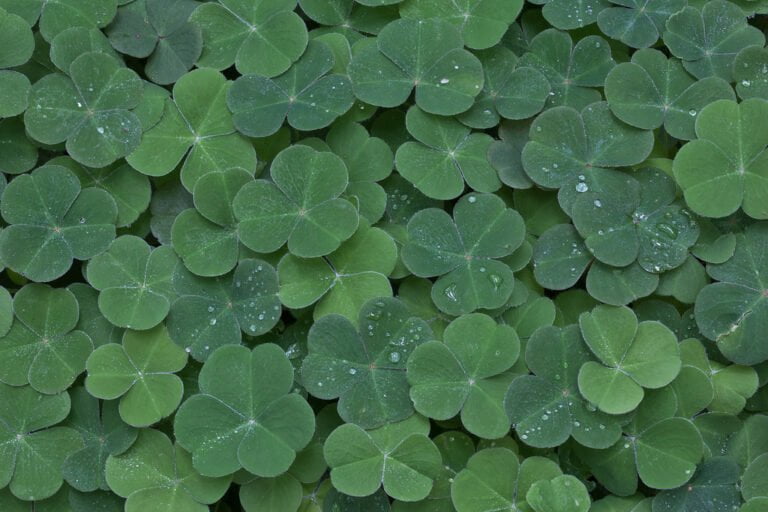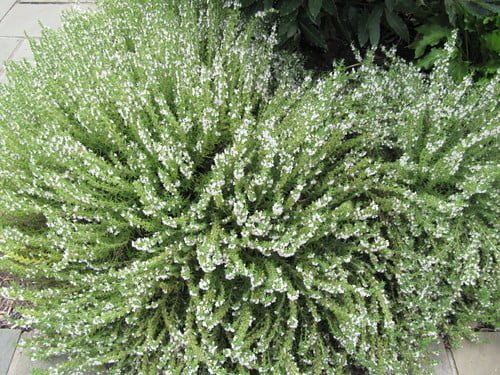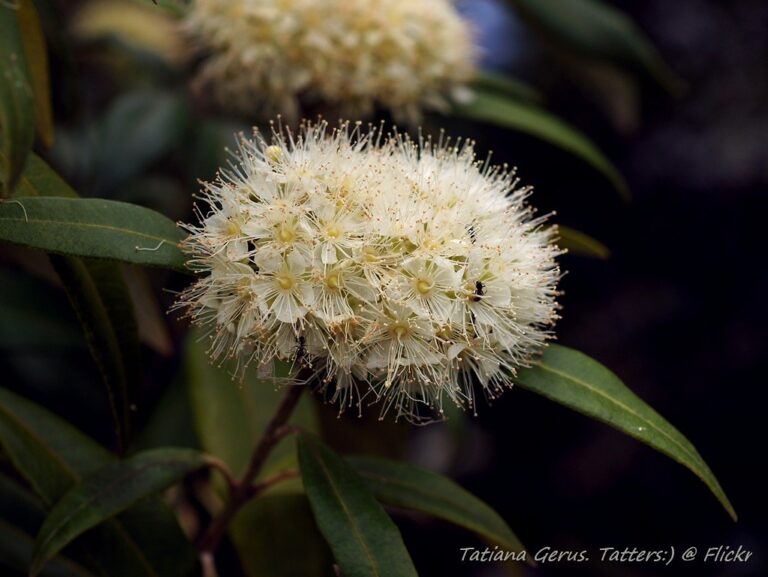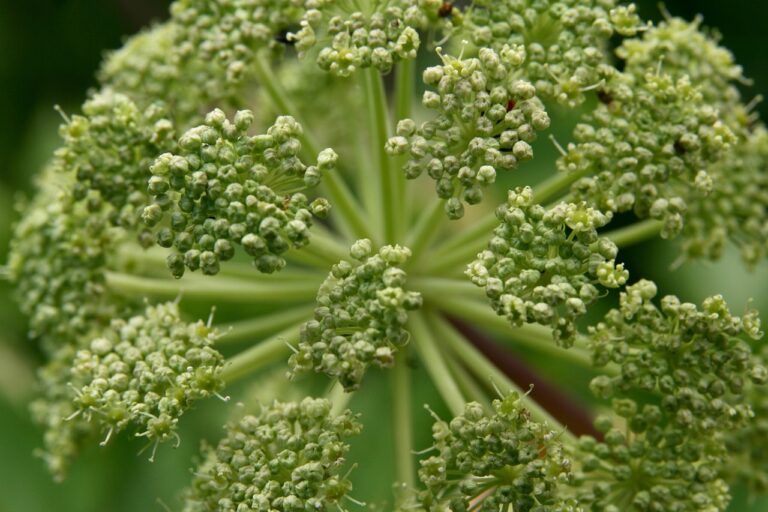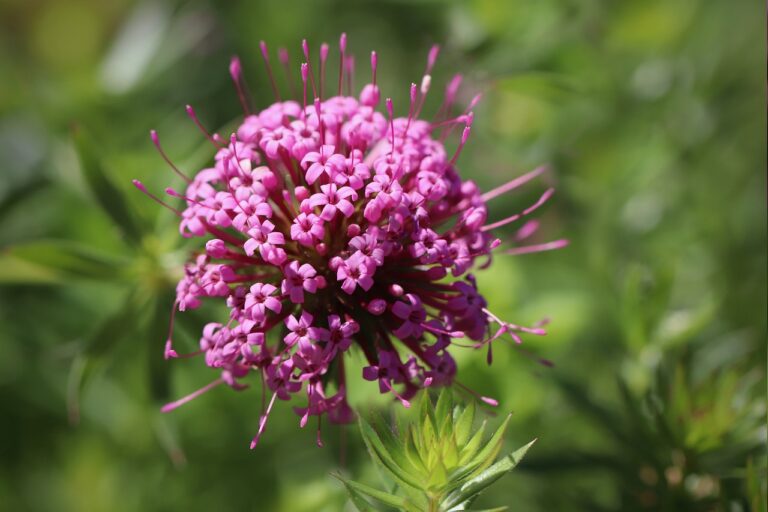Lovage
I adore cultivating lovage in my garden. It flourishes in full to filtered sunlight and requires consistent soil moisture. Trimming encourages new growth and the right nutrient balance is crucial. For peak flavor, harvest leaves before blooming and dry for later use. The roots provide an earthy taste and seeds can enhance dishes. Lovage is a versatile herb used in European cuisine. Its celery-like taste adds a unique touch to soups, salads, and more. Interested in learning more about lovage’s flavors and culinary applications?
Origins and Distribution
Originating from the regions of Afghanistan and Iran, lovage has a rich history of cultivation in Europe for its culinary uses. This herb, scientifically known as Levisticum officinale, has been widely adopted in European cuisine for its unique flavor profile reminiscent of a blend of celery and parsley. Lovage has found its way into various European dishes, particularly in southern European cooking, where its leaves are commonly used to improve the taste of soups, stews, and salads.
In terms of distribution, lovage has spread beyond its native regions and is now cultivated in many parts of the world, including Europe, South-East Asia, and North and South America. This herb’s versatility in the kitchen is evident as different parts of the plant are utilized for culinary purposes. The roots are employed as a vegetable, the leaves as a herb, and the seeds as a spice, showcasing the plant’s multifaceted nature.
When looking at the lovage plant itself, its larger basal leaves are a striking feature, capable of growing up to 70cm in length. These leaves are characterized by acutely pointed leaflets that contribute not only to the visual appeal of the plant but also to its distinct flavor when incorporated into dishes. The adaptability of lovage in various cuisines highlights its significance as a culinary herb with a rich history deeply rooted in European culinary traditions.
Culinary and Medicinal Uses
Cultivating lovage for both culinary and medicinal purposes involves maximizing the plant’s various uses, from its tasty leaves to its fragrant seeds and roots. Lovage leaves are versatile, adding a celery-like flavor to dishes when used fresh or dried. They are commonly employed in salads, soups, and broths, enhancing the overall taste with their aromatic qualities. The roots of the lovage plant offer a unique culinary experience when grated and sprinkled over salads, contributing a distinct and earthy flavor profile.
When it comes to lovage seeds, they serve as a flavorful spice akin to fennel seeds. These seeds are particularly popular in various cuisines worldwide, enriching dishes with their aromatic and slightly citrusy notes. Incorporating lovage seeds into recipes can enhance the overall taste profile, making them a sought-after ingredient for those looking to add depth to their culinary creations.
In addition to its culinary uses, lovage has a history of medicinal applications. However, caution is advised due to the presence of furanocoumarins in the roots, which can lead to photosensitivity. Despite this, when used appropriately and in moderation, lovage can offer both flavor and potential health benefits, making it a valuable addition to any herb garden.
Growing Conditions and Care
I’ve found that lovage thrives best in areas with full to filtered sunlight, ensuring the plant receives the necessary light for robust growth. Maintaining consistent soil moisture levels is essential to support lovage plants, allowing them to develop flavorful leaves that are perfect for culinary use. Proper care also involves pruning lovage to encourage new growth and harvesting leaves regularly to keep the plant productive.
Sunlight and Water
Ensuring sufficient sunlight exposure and maintaining consistent soil moisture are essential factors in successfully cultivating and caring for lovage plants. Lovage, a sun-loving plant, thrives best in full to filtered sunlight. Adequate sunlight promotes healthy growth and improves the flavor of the leaves. When planting lovage seeds, it’s important to select a location with ample sunlight to support germination and robust development. Additionally, maintaining consistent soil moisture is crucial for the best growth of lovage. Water the plant regularly, making sure the soil stays moist but not waterlogged. Proper watering practices help prevent wilting and support strong root development. By providing the right balance of sunlight and water, you can ensure your lovage plant thrives and provides flavorful leaves for culinary use.
Soil and Nutrients
To promote healthy growth and robust development of lovage plants, ensuring proper soil composition and nutrient balance is crucial. Lovage thrives in nutrient-rich, well-draining soil. Here are some key points to bear in mind for ideal soil and nutrient conditions:
- Lovage benefits from fertile soil with good drainage to prevent waterlogging.
- Adding compost or well-decomposed organic matter can improve soil structure and provide essential nutrients.
- Maintaining a slightly alkaline soil pH around 6.5 to 7.0 is best for lovage growth.
- Regularly mulching around the base of lovage plants helps retain soil moisture and suppresses weed growth.
- Nitrogen-rich fertilizers can stimulate lush foliage growth, which is essential as lovage leaves are commonly used in culinary dishes.
Pruning and Harvesting
When preparing to prune and harvest lovage plants, it is essential to cut back the stems to ground level in late fall or early spring to encourage new growth. Lovage, a close relative of celery, thrives when pruned in this manner. To harvest lovage leaves, simply cut them from the plant as needed, making sure to leave some foliage for ongoing growth. Regular watering, especially during dry spells, is vital to maintain soil moisture for the lovage plant. Providing support to tall lovage plants helps prevent them from toppling over or bending due to their weight. It is also important to inspect lovage plants regularly for pests and diseases and take appropriate measures to preserve the plant’s health.
Flavor Profile and Pairings
Exploring lovage’s flavor profile reveals a dynamic blend of celery and parsley with a bold, spicy twist that distinguishes it in culinary creations. The intense celery flavor of lovage, akin to celery seeds, offers a zesty, tangy note that can be overpowering if not used judiciously. Here are some insights into lovage’s flavor profile and ideal pairings:
- Robust Taste: Lovage provides a strong, almost pungent celery taste that can enrich the depth of various dishes.
- Citrusy Kick: The herb’s citrusy kick adds a tangy twist to salads and soups, making it a versatile ingredient.
- Ideal Matches: Lovage complements pork, poultry, and strongly flavored fish dishes exceptionally well, elevating their taste profiles.
- Use in Moderation: Due to its potent flavor, it is advisable to start with small amounts of lovage, typically one or two chopped leaves.
- Versatile Seeds and Stalks: Lovage seeds can be used in the same way as celery seeds in pickling, while the stalks and roots can be cooked like other root vegetables, offering a range of culinary possibilities.
Incorporating lovage into dishes requires a nuanced approach to balance its bold flavors effectively. With its unique blend of celery and parsley notes, lovage can be a game-changer in the kitchen, adding depth and character to a variety of recipes.
Harvesting and Storing Lovage
During the prime harvesting period for lovage, the leaves should be carefully gathered before the plant enters its flowering stage to preserve the best flavor. Lovage leaves can be used fresh in culinary dishes or preserved for later use. To store lovage leaves, they can be dried in a dehydrator or hung in a well-ventilated area. Drying lovage leaves helps concentrate their flavor, making them suitable for use in soups, stews, or teas.
When it comes to harvesting lovage seeds, wait until they turn brown on the plant. Harvest the seeds by cutting the seed heads and allowing them to dry further in a paper bag. Once dried, the seeds can be stored in an airtight container for future use in cooking or for planting in the next season.
Lovage roots are best harvested in the fall or early spring. After digging up the roots, they should be cleaned and stored in a cool, dark place. Lovage roots have a strong flavor and can be used in various culinary applications, providing a unique taste to dishes like stews or roasted meats.
For longer storage, lovage can be frozen. Freezing the leaves or chopped stems helps maintain their flavor for future use, ensuring you can enjoy the distinct taste of lovage in your dishes even when it’s out of season.
Lovage in European Cuisine
I have always been fascinated by the culinary uses of lovage in European cuisine. Its distinct flavor profile, reminiscent of a blend of celery and parsley, adds a unique zing to various dishes. Traditional European recipes often feature lovage in salads, soups, and meat dishes, showcasing its versatility and robust taste.
Lovage Culinary Uses
How does lovage, a herb widely utilized in European cuisine, bring a unique blend of celery, parsley, and citrusy flavors to culinary delights across various regions? Lovage, a delicious herb, is frequently used in salads, soups, pork, poultry, and strongly flavored fish dishes. Here are some key points about lovage in European cuisine:
- Resembles thin, dark green celery with dark green leaves, adding a distinct touch to dishes.
- Commonly used in salads, imparting a fresh and aromatic flavor profile.
- Offers a combination of celery and parsley flavors with a citrusy zing.
- Can be used in soups to improve the overall taste and aroma.
- Its seeds are versatile and can be used in the same way as celery seeds, while the stalks and roots can be cooked like other root vegetables, bringing unique flavors to dishes.
Lovage Flavor Profile
With a flavor profile reminiscent of a blend of celery and parsley, lovage brings a distinctive and intense herbaceous taste to a variety of European culinary dishes. This perennial plant, commonly found in Southern Europe, Germany, England, and Eastern European countries, adds a citrusy zing that improves the overall flavor of dishes. Lovage’s thin, dark green stalks and leaves give it an attractive appearance in gardens and on plates. Known for its potency, it’s advisable to start with just one or two chopped leaves to prevent overwhelming the dish. Its bold flavor makes it a sought-after herb in European cuisine, where it is valued for its ability to heighten the taste profile of soups, stews, salads, and more.
Lovage Traditional Recipes
Lovage’s presence in European cuisine is deeply rooted in its ability to enrich traditional recipes with a unique flavor profile reminiscent of celery and parsley, elevating dishes with its intense herbaceous taste. This herb has a long history in European culinary traditions and is traditionally added to various dishes to improve their flavors. Here are some common ways lovage is used in European cuisine:
- Lovage leaves are frequently added to salads, soups, pork, poultry, and dishes with strongly flavored fish.
- The seeds of lovage can be used in pickling, providing a distinct flavor to preserved foods.
- Lovage roots can be cooked like other root vegetables, offering versatility in traditional European dishes.

